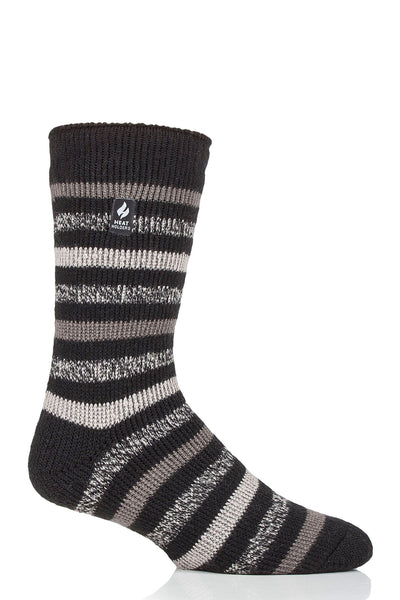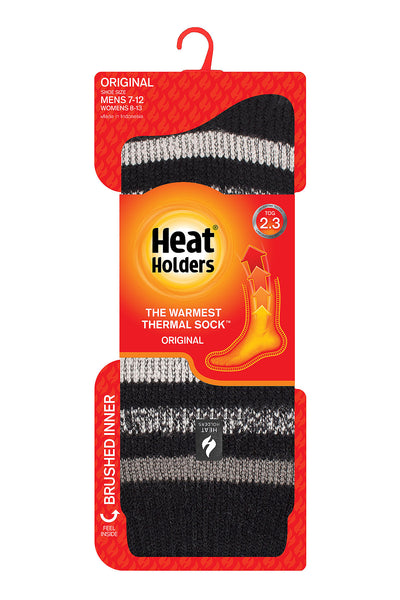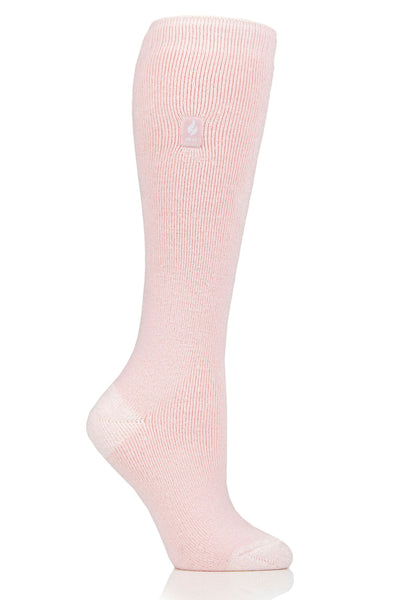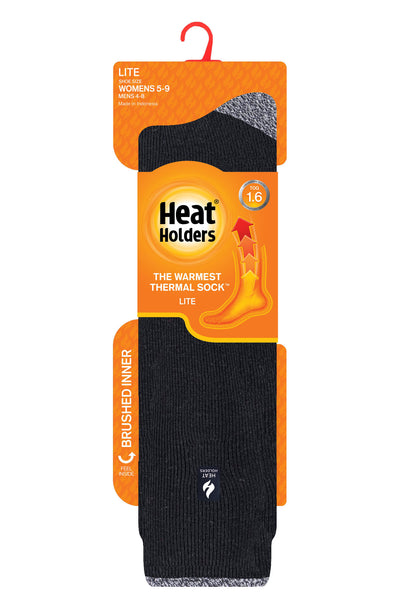In the realm of running gear, thermal socks have gained increasing popularity among athletes seeking warmth and comfort during colder outings. This article delves into the various aspects of thermal socks, exploring their effectiveness, benefits, and overall necessity for runners.
Understanding the Concept of Thermal Socks
Thermal socks are specially designed footwear that offer enhanced insulation to keep the feet warm in cold weather conditions. Made from specialized materials, these socks function to regulate foot temperature, ensuring comfort even in the chilliest of environments.
The fundamental aim of thermal socks is to provide a warmer alternative to regular socks. They are often thicker and may incorporate advanced fabric technology, designed to trap heat while allowing moisture to escape from the foot. This balance is crucial for athletes who spend prolonged periods outdoors, as it helps to prevent blisters and discomfort that can arise from damp conditions.
Moreover, the importance of thermal socks extends beyond just warmth; they also play a significant role in maintaining overall foot health. Cold temperatures can lead to reduced blood circulation, which may result in numbness or even frostbite in extreme cases. By providing adequate insulation, thermal socks help to ensure that blood flow remains steady, keeping the feet warm and functional during outdoor activities.
The Science Behind Thermal Socks
At the core of thermal sock technology is the concept of thermal insulation. The socks typically utilize materials such as wool, acrylic, or advanced synthetic fibers which retain heat and wick away moisture. Wool, for instance, is known for its superior warmth and moisture-wicking capabilities, making it an ideal choice for cold-weather running.
In addition, many thermal socks feature a blend of materials that enhances both comfort and performance. These blends often include a combination of nylon or spandex for elasticity, durability, and a better fit. This combination not only ensures that the socks stay in place during rigorous activity but also allows for a snug fit that reduces the risk of bunching and irritation, which can detract from the overall experience of outdoor sports.
Different Types of Thermal Socks
-
Merino Wool Socks: Known for their comfort and excellent insulating properties.
-
Acrylic Socks: Lightweight and moisture-wicking, often used in milder cold conditions.
-
Synthetic Blends: Combines various materials for performance in extreme cold, often elastic and breathable.
-
Heated Socks: Battery-operated options that actively generate heat for extreme cold environments.
Each type of thermal sock has its unique set of features that cater to different running styles and environmental conditions. Understanding these differences can aid runners in making an informed choice based on their personal needs. For instance, those who engage in high-intensity winter sports may prefer synthetic blends for their moisture-wicking properties, while casual hikers might opt for the comfort and warmth of Merino wool. Additionally, heated socks are becoming increasingly popular among those who face extreme conditions, providing an extra layer of warmth that can be adjusted according to the surrounding temperature.
Furthermore, the design of thermal socks has evolved to include various lengths and styles, such as crew-length, knee-high, and even compression options. Each design serves a specific purpose, with longer socks providing additional warmth and support to the lower leg, while compression socks can enhance circulation and reduce muscle fatigue during long treks or runs. As technology continues to advance, the variety and functionality of thermal socks will likely expand, offering even more tailored solutions for outdoor enthusiasts.
The Role of Thermal Socks in Running
Thermal socks play a significant role in maintaining comfort for runners, particularly during cold weather. Cold feet can lead to a range of issues, from discomfort to decreased performance, making appropriate footwear vital for any serious runner. The right thermal socks can act as a barrier against the elements, ensuring runners can focus on their performance rather than the chill in the air. This is especially important for those who train outdoors during winter months or in regions where temperatures drop significantly.
Moreover, suitable thermal socks can provide essential cushioning, supporting the foot during the impact phases of running, and can help prevent blisters through their snug fit and moisture-wicking properties. The advanced materials used in thermal socks often include blends of wool, synthetic fibers, and other technical fabrics designed to enhance insulation while remaining lightweight. This combination not only keeps feet warm but also allows for breathability, ensuring runners do not overheat during their workouts.
Benefits of Wearing Thermal Socks for Running
-
Increased Warmth: Essential for maintaining comfort in cold conditions, reducing the risk of frostbite.
-
Moisture Management: Wicking away sweat keeps feet dry, lessening the chances of blisters.
-
Enhanced Comfort: Extra cushioning and pressure distribution can improve the overall running experience.
-
Injury Prevention: Proper support may reduce the risk of injuries related to cold weather.
These benefits collectively contribute to a better running experience, allowing athletes to perform at their best even in less-than-ideal conditions. Additionally, thermal socks often come with arch support and reinforced heels and toes, which can further enhance comfort and durability. This added support is particularly beneficial for long-distance runners who may experience fatigue over extended periods, as it helps maintain foot alignment and reduces strain on the muscles and ligaments.
Potential Drawbacks of Thermal Socks for Runners
Despite their advantages, there are some drawbacks to consider when it comes to thermal socks. Some runners might find them too thick, which could lead to cramped conditions inside standard running shoes. This discomfort can negatively impact performance and undermine the very benefits thermal socks are supposed to provide. Runners must try on their socks with their shoes to ensure a proper fit, as a snug but not overly tight fit is essential for optimal performance.
Furthermore, thermal socks may be more expensive than regular running socks, and their specialized fabric may require specific washing or drying care that could be seen as inconvenient by some users. The investment in high-quality thermal socks is often justified by their longevity and performance benefits, but it may deter casual runners who are not ready to commit to specialized gear. Additionally, the variety of thermal socks available can be overwhelming, leading to confusion about which type is best suited for individual needs and preferences.
Evaluating the Effectiveness of Thermal Socks
To understand whether thermal socks are a worthwhile investment for runners, one must evaluate their effectiveness based on various factors, including material quality, fit, and the specific running environment. Real-world testing and user feedback can also provide insight into how well these socks perform in practice.
Factors Influencing the Performance of Thermal Socks
-
Material Composition: Different fabrics possess varying insulation and moisture management properties.
-
Fit: A properly fitting sock will significantly enhance comfort and performance.
-
Weather Conditions: Depending on the severity of the cold, the effectiveness of thermal socks may vary.
-
Running Style: Runners with different styles might experience varying levels of benefit from thermal socks.
Considering these factors enhances the understanding of how thermal socks can uniquely suit each runner, depending on their individual circumstances. For instance, runners who frequently tackle trails in colder climates may benefit from thicker, more insulated options, while those who prefer road running might opt for lighter thermal socks that still provide warmth without compromising breathability. The choice of thermal socks can also be influenced by personal preferences, such as the desire for additional cushioning or arch support, which can further tailor the running experience.
Measuring the Impact of Thermal Socks on Running Comfort and Performance
Various studies have found that wearing thermal socks can enhance comfort levels, especially in low temperatures. Many runners report positive feedback regarding improved warmth and dryness, which are vital for maintaining focus and stamina during icy runs.
Additionally, anecdotal evidence suggests that runners who utilize thermal socks often feel a notable difference in their overall performance, such as fewer distractions related to discomfort, leading to a more enjoyable running experience. Beyond just comfort, thermal socks can also play a role in preventing common foot ailments, such as blisters and frostbite, by providing a snug fit that minimizes friction and wicks moisture away from the skin. This protective aspect is particularly crucial during long-distance runs, where prolonged exposure to cold and wet conditions can lead to significant discomfort and even injury.
Moreover, the psychological impact of wearing thermal socks should not be underestimated. Many runners report feeling more confident and prepared when they are appropriately equipped for cold weather, which can translate into improved performance. The mental boost that comes from knowing one is taking proactive steps to combat the elements can enhance motivation and determination, ultimately contributing to a more fulfilling running experience. This interplay between physical comfort and mental readiness underscores the importance of choosing the right gear for optimal performance in challenging conditions.
Making the Decision: Are Thermal Socks Right for You?
The decision to invest in thermal socks hinges on several considerations. Personal preferences, environmental conditions, and running habits play a significant role in determining whether these specialized socks are suitable for an individual runner.
Considering Your Running Environment and Conditions
Runners who frequently train in cold or wet environments may find thermal socks to be essential. In contrast, those who primarily run in warmer climates may not experience the same benefits. Understanding your typical running conditions can greatly influence your decision on whether thermal socks are necessary.
Personal Comfort and Preference in Running Gear
Every runner has unique preferences regarding footwear and gear. Some may prioritize lightweight options, while others may seek the extra warmth and cushioning that thermal socks provide. Trying out different types can help gauge comfort levels and performance.
Cost and Quality Considerations for Thermal Socks
Investing in high-quality thermal socks may require a higher upfront cost, but their durability and performance can make them worth it for regular winter runners. Evaluating brands, materials, and guarantees can assist in finding the best value without compromising on performance.
Care and Maintenance of Thermal Socks
To ensure the longevity of thermal socks, proper care and maintenance are paramount. Following manufacturer instructions regarding washing and drying can extend the life of the socks, maintaining their insulating properties and overall integrity.
Proper Cleaning and Storage of Thermal Socks
-
Always wash thermal socks in cold water to protect the material.
-
Avoid fabric softeners that can degrade moisture-wicking capabilities.
-
Air-dry the socks whenever possible rather than using a dryer to prevent shrinkage.
-
Store the socks in a cool, dry place to prevent mildew formation.
These simple steps can help preserve the effectiveness of thermal socks, ensuring optimum performance every time they are worn.
Lifespan and Durability of Thermal Socks
The lifespan of thermal socks can vary based on usage and care. Generally, high-quality thermal socks can last several seasons if well-maintained. However, runners should keep an eye out for signs of wear, including thinning material, fading, or reduced performance, which could signal the need for replacement.
Heat Holders® for the Best Running Socks in the Cold
Heat Holders® offers thick, soft socks for running in the cold. These socks come in 3 Levels of Warmth. Like a thermostat for your feet, choose you can choose the socks that best suit the cold you're facing. Check out the full line of socks, today! Happy shopping!

















